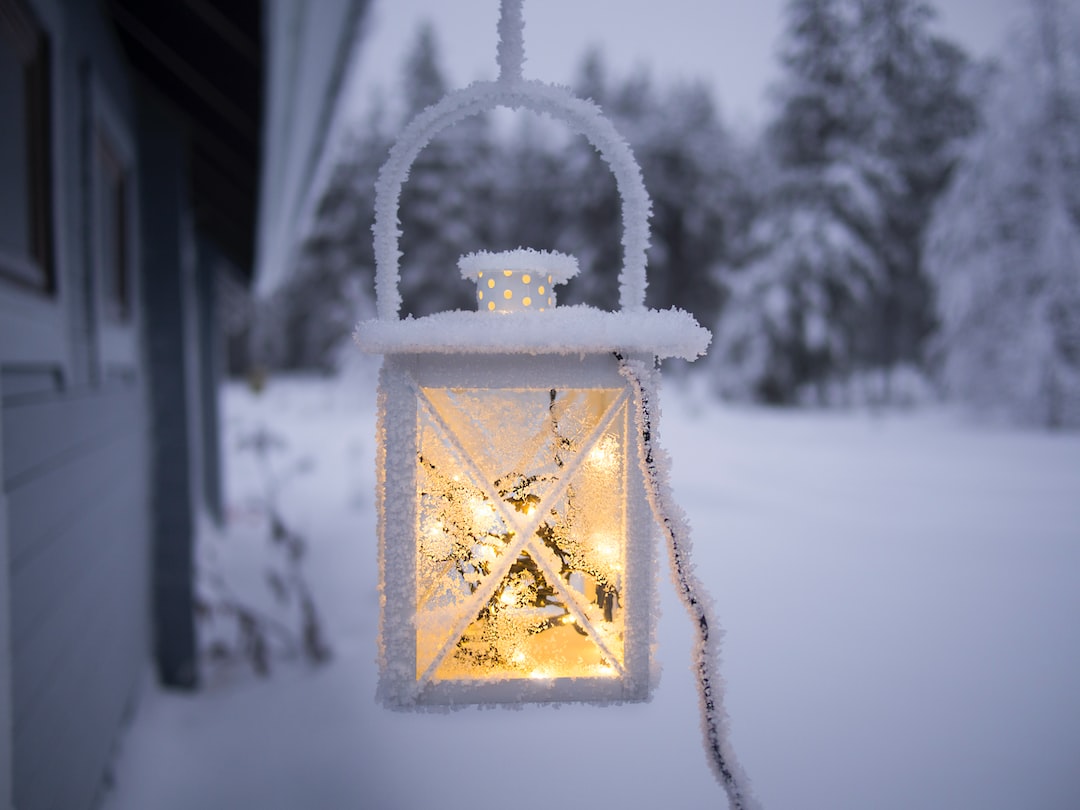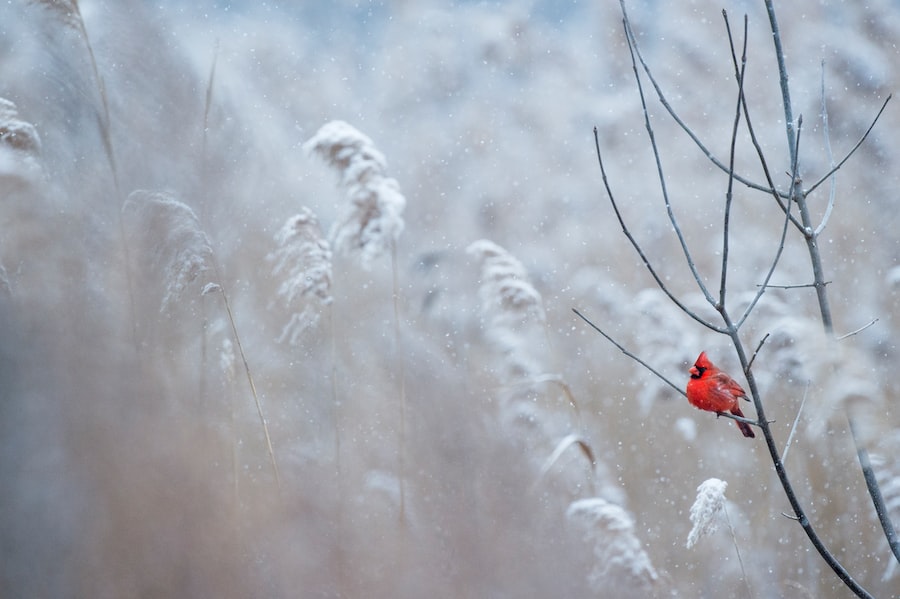Chilly Winter? Keep Your Plants Warm with These Simple Tips

Winter can be a challenging time for plants, especially those that are not adapted to cold temperatures. As the temperature drops, plants can suffer from various issues such as frost damage, reduced metabolism, and decreased ability to absorb water and nutrients. Therefore, keeping your plants warm during winter is crucial to ensure their survival and maintain their health.
In this blog post, we will discuss the effects of cold temperatures on plants, how to choose the right plants for cold weather, and tips for preparing and protecting your plants during winter. By understanding these factors and implementing the necessary measures, you can enjoy a beautiful garden all year round.
Key Takeaways
- Keeping your plants warm during winter is crucial for their survival and growth.
- Cold temperatures can have negative effects on plants, such as stunted growth and death.
- Choosing the right plants for cold weather can make a big difference in their ability to withstand winter conditions.
- Preparing your plants for winter through pruning and mulching can help protect them from the cold.
- Covering and wrapping techniques, as well as using heat sources, can further protect your plants from frost.
Understanding the Effects of Cold Temperatures on Plants
Cold temperatures can have detrimental effects on plants. When exposed to freezing temperatures, plant cells can be damaged, leading to cell rupture and death. Additionally, cold temperatures can disrupt the metabolism of plants, reducing their ability to carry out essential processes such as photosynthesis and nutrient absorption. This can result in stunted growth and overall decline in plant health.
Frost is another common issue during winter that can cause significant damage to plants. When frost occurs, ice crystals form inside plant tissues, causing cell rupture and tissue damage. This can lead to wilting, discoloration, and even death of the affected plant parts.
It’s important to note that some plants are more tolerant of cold temperatures than others. When choosing plants for your garden, consider their hardiness zone rating. This rating indicates the plant’s ability to survive in specific temperature ranges. By selecting plants that are adapted to your climate and can withstand the lowest temperatures in your area, you can ensure their survival during winter.
Choosing the Right Plants for Cold Weather
Choosing the right plants for cold weather is essential for maintaining a healthy garden during winter. When selecting plants for your garden, consider their hardiness zone rating. This rating is based on the average minimum winter temperature in a specific area and indicates the plant’s ability to survive in that climate.
It’s important to choose plants that are adapted to your climate and can withstand the lowest temperatures in your area. Some cold-hardy plants include conifers, evergreens, and winter-blooming flowers. These plants have developed mechanisms to protect themselves from cold temperatures, such as waxy coatings on their leaves or the ability to go dormant during winter.
Research the specific hardiness zone of your area and choose plants that are suitable for that zone. This will ensure that your plants have the best chance of surviving and thriving during winter.
Preparing Your Plants for Winter: Tips for Pruning and Mulching
| Plant Type | Pruning Tips | Mulching Tips |
|---|---|---|
| Perennials | Cut back dead foliage and stems to 1-2 inches above soil level | Apply 2-3 inches of mulch around base of plant, avoiding direct contact with stems |
| Shrubs | Remove dead or damaged branches, thin out crowded growth, and shape as desired | Apply 3-4 inches of mulch around base of plant, extending out to drip line |
| Trees | Remove dead or diseased branches, thin out crossing or rubbing branches, and shape as desired | Apply 3-4 inches of mulch around base of tree, extending out to drip line, but not touching trunk |
Preparing your plants for winter is an important step in ensuring their survival and health. One of the key tasks in preparing your plants for winter is pruning. Prune your plants in the fall to remove dead or diseased branches and promote healthy growth. This will also help prevent any potential issues from spreading to other parts of the plant.
Another important step is applying a layer of mulch around the base of your plants. Mulch acts as insulation, protecting the roots of your plants from extreme temperatures. It also helps retain moisture in the soil, which is crucial for plant health during winter.
When applying mulch, make sure to leave a small gap around the base of the plant to prevent moisture buildup and potential rotting. Use organic materials such as straw, wood chips, or shredded leaves as mulch. These materials will break down over time, adding nutrients to the soil.
Avoid fertilizing your plants in the fall, as this can stimulate new growth that is vulnerable to frost damage. Instead, focus on providing adequate water and nutrients before winter arrives.
Protecting Your Plants from Frost: Covering and Wrapping Techniques
Protecting your plants from frost is essential to prevent damage and ensure their survival. One effective method is to cover your plants with blankets, burlap, or frost cloth. These materials act as a barrier, trapping heat and preventing frost from forming on the plant’s surface.
To cover your plants, use stakes or hoops to create a frame over them. Drape the cover over the frame, making sure it reaches the ground on all sides. Secure the cover with clips or weights to prevent it from blowing away in strong winds.
For young trees, it’s important to wrap the trunks with burlap or tree wrap. This helps protect them from sunscald and frost cracks, which can occur when there is a sudden change in temperature. Wrap the trunk from the base up to the first set of branches, making sure to leave some space for air circulation.
Using Heat Sources to Keep Your Plants Warm

In extreme cold spells, you may need to provide additional heat sources to keep your plants warm. Space heaters, heat lamps, or heated mats can be used to provide warmth to your plants. Place the heat source near your plants but not too close to avoid burning them.
It’s important to regulate the temperature and prevent overheating. Use a thermostat or timer to control the heat source and maintain a consistent temperature. This will ensure that your plants receive the necessary warmth without being exposed to excessive heat.
Remember to monitor the heat source regularly and check for any signs of malfunction or damage. Safety should always be a priority when using heat sources in your garden.
Watering Your Plants in Winter: Dos and Don’ts
Watering your plants correctly during winter is crucial for their survival and health. Before the ground freezes, water your plants deeply to ensure they have enough moisture to last through winter. This is especially important for evergreen plants that continue to lose water through their leaves during winter.
However, it’s important to avoid watering your plants during freezing temperatures. Watering when the temperature is below freezing can cause ice to form on the leaves and damage them. It’s best to water your plants on a sunny day when the temperature is above freezing.
Additionally, be mindful of overwatering your plants. While it’s important to provide adequate moisture, overwatering can lead to root rot and other fungal diseases. Monitor the soil moisture level and adjust your watering schedule accordingly.
Monitoring Your Plants for Signs of Stress and Damage
Regularly monitoring your plants for signs of stress and damage is crucial during winter. Check your plants regularly for signs of wilting, yellowing leaves, or stunted growth. These can be indicators of stress or damage caused by cold temperatures.
Look for signs of frost damage, such as blackened or mushy leaves, and remove them promptly. This will prevent any potential issues from spreading to other parts of the plant. If you notice any signs of stress or damage, take appropriate action to address the issue and provide necessary care to your plants.
Monitoring the soil moisture level is also important during winter. Dry soil can cause stress to your plants, while overly wet soil can lead to root rot. Use a moisture meter or simply check the soil with your finger to determine if watering is necessary.
Reviving Cold-Damaged Plants: Steps to Recovery
If your plants have suffered frost damage, don’t panic. Many plants can recover from cold damage with proper care. The first step is to prune away any dead or damaged branches and leaves. This will help redirect the plant’s energy towards healthy growth.
Water your plants deeply after pruning to provide them with the necessary moisture. Additionally, apply a balanced fertilizer to promote new growth and provide essential nutrients.
It’s important to be patient during the recovery process. It may take some time for your plants to fully recover from cold damage. Continue monitoring their progress and providing the necessary care to support their growth.
Enjoying a Beautiful Garden All Year Round
Keeping your plants warm during winter requires some effort, but the rewards are worth it. By understanding the effects of cold temperatures on plants, choosing the right plants for cold weather, and implementing proper preparation and protection measures, you can enjoy a beautiful garden all year round.
Remember to monitor your plants regularly, adjust your care routine as needed, and seek professional help if you’re unsure how to care for your plants during winter. With the right knowledge and care, you can ensure the survival and health of your plants during the cold winter months.



